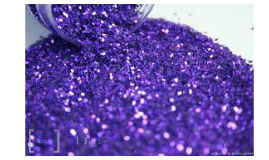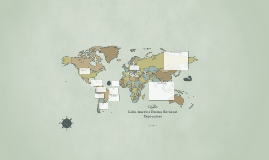Glitter
Transcript: The Fascinating World of Glitter A Comprehensive Research on Its History, Production, and Applications Definition of Glitter Types of Glitter History of Glitter Raw Materials Used Glitter is a cosmetic and craft material made from various substrates coated in reflective materials. Its tiny particles reflect light, creating a sparkling effect, commonly used in arts, cosmetics, and fashion. There are various types of glitter, including metal, plastic, and biodegradable options. Each type varies in texture, shape, and purpose, catering to specific applications in crafting and cosmetics. Glitter is primarily made from plastic materials such as polyethylene terephthalate (PET) or acrylic. Additionally, metallic and biodegradable options are emerging, incorporating natural materials like cellulose to reduce environmental impact. The use of glitter dates back to ancient civilizations, where it was used for decoration and ceremonial purposes. In modern times, it gained popularity in the 20th century, primarily in the cosmetics industry. Environmental Considerations Art and Craft Cosmetics Industry Manufacturing Techniques Manufacturing glitter raises environmental concerns due to its plastic content, contributing to microplastic pollution. This has led to increased demand for eco-friendly alternatives and regulations to mitigate environmental impact, influencing industry practices. In arts and crafts, glitter is utilized to enrich visual appeal, adding sparkle to paintings, scrapbooks, and handmade decorations. Artists often incorporate glitter to create dynamic textures and striking effects that captivate viewers. The cosmetics industry employs glitter in products like eye shadows, nail polish, and body lotions, enhancing glamour and appeal. Glitter particles allow for shimmering effects, making products more attractive to consumers, particularly in festive seasons. The glitter manufacturing process includes slitting, coating, and cutting. These techniques ensure that the glitter particles are uniform in size and can be produced in various colors and finishes, enhancing their aesthetic appeal. Regulations and Alternatives Fashion and Design Future Trends in Glitter Use Microplastics Concern As awareness grows, some regions are implementing bans on plastic glitter in cosmetics and crafts. Alternatives like biodegradable glitter made from natural resources offer sustainable options, minimizing environmental impact. The glitter industry is evolving, with an increasing focus on eco-friendly products. Innovations in materials and production methods aim to reduce pollution and enhance glitter's biodegradability, catering to environmentally conscious consumers. In fashion, glitter is used in garments, accessories, and shoes to elevate style and create standout pieces. Designers incorporate glitter to make bold statements, often seen on runways and in haute couture garments. Glitter is often made from plastic materials, contributing to the microplastics problem in oceans and soil. These microplastics can harm marine life and enter the food chain, raising concerns about their long-term effects on health and ecosystems.

















